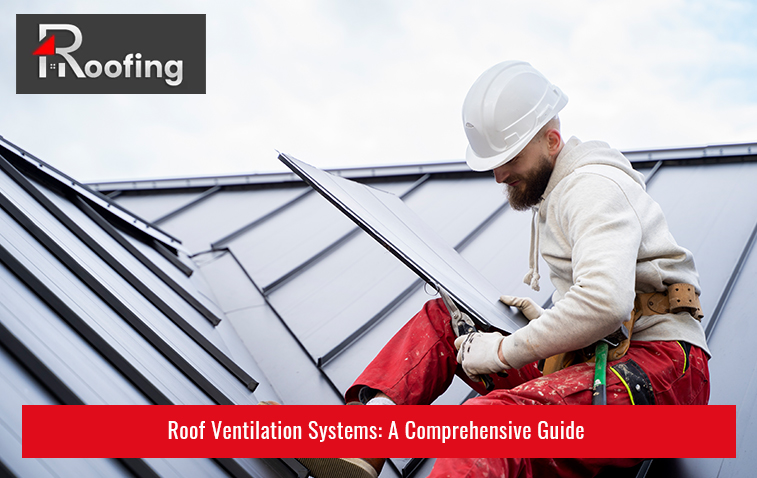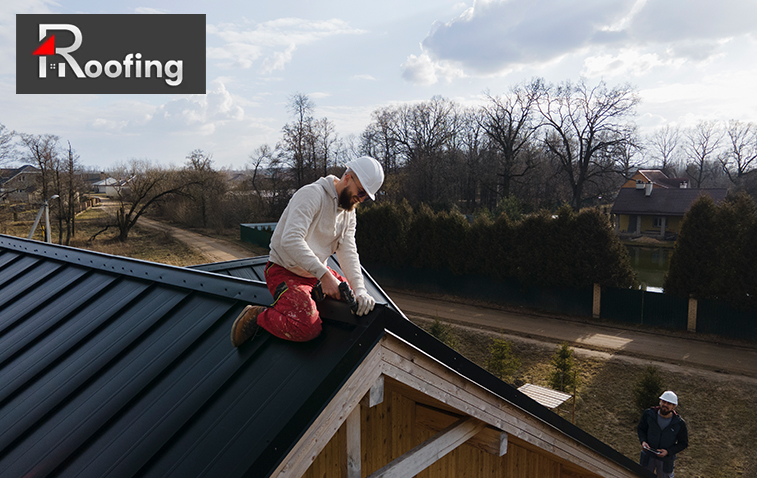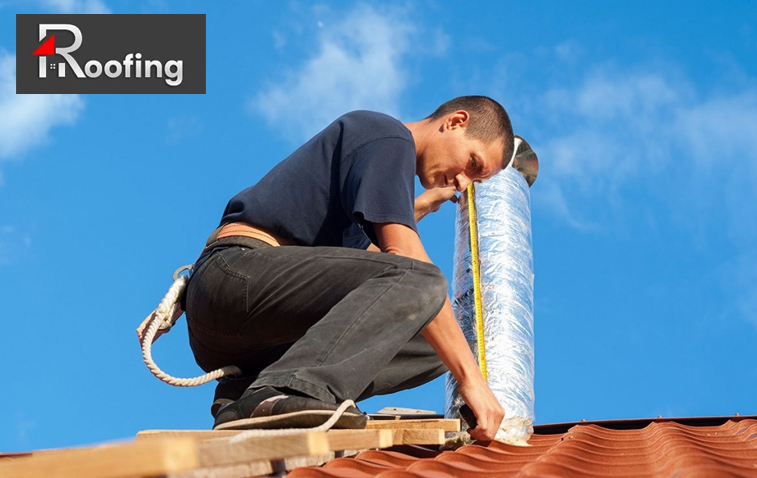Roof Ventilation Systems: A Comprehensive Guide
Roof ventilation is an important aspect of home construction and maintenance that often goes overlooked. Whether you’re building a new home or upgrading an existing roof, taking the time to plan and implement an effective roof ventilation system is a wise investment. A well-ventilated roof ensures the longevity of the roofing materials, maintains a comfortable indoor environment, and improves energy efficiency. This comprehensive guide delves into the importance of roof ventilation, the different types of systems available, and the best practices for ensuring your roof is properly ventilated.

Why Roof Ventilation Matters
Effective roof ventilation is essential for several reasons:
Temperature Regulation
In the summer, attics can become incredibly hot, sometimes reaching temperatures over 150 degrees Fahrenheit. This extreme heat can damage roofing materials, warp wood, and increase cooling costs as your air conditioning system works overtime to compensate. Proper ventilation helps to release this trapped heat, maintaining a cooler attic and, consequently, a cooler living space below.
Moisture Control
Moisture is a home’s silent enemy. During the winter, warm air from your living spaces can rise into the attic, where it meets the colder temperatures of the roof, leading to condensation. This moisture can cause mould growth, wood rot, and insulation damage. Ventilation systems allow moisture-laden air to escape, reducing the risk of these problems.
Energy Efficiency
A well-ventilated roof helps reduce the workload on your HVAC system. By keeping the attic cooler in the summer and preventing moisture buildup in the winter, ventilation can lower energy bills and extend the lifespan of your heating and cooling systems.
Roof Longevity
Heat and moisture are two of the biggest threats to roofing materials. By mitigating these factors, ventilation systems help preserve the integrity of shingles, underlayment, and other roofing components, thereby extending the overall life of your roof.

Types of Roof Ventilation Systems
There are various types of roof ventilation systems, each with its own advantages and ideal use cases. Understanding these options will help you choose the best system for your home.
Ridge Vents
Ridge vents are installed along the peak of the roof, allowing warm air to escape from the attic. They are typically covered with shingles, making them blend seamlessly with the roofline.
Pros:
- Discreet appearance
- Provides continuous ventilation along the entire roof ridge.
- Effective in all weather conditions
Cons:
- Requires professional installation.
- The initial cost can be higher compared to other options.
Soffit Vents
Soffit vents are installed under the eaves of the roof, allowing cooler air to enter the attic. They work in tandem with ridge vents, creating a natural airflow that pushes hot air out through the ridge vents.
Pros:
- Promotes consistent airflow
- It helps prevent ice dams in the winter
- Affordable and easy to install
Cons:
- Can be blocked by insulation if not installed properly.
- Requires regular maintenance to ensure they are not obstructed.
Gable Vents
Gable vents are installed on the exterior walls of the attic, typically near the peak of the gable. They can be functional and decorative, adding a design element to the home.
Pros:
- Easy to install
- Effective in areas with moderate climates
- Can enhance the exterior aesthetics of a home
Cons:
- Less effective in very hot or very cold climates
- May not provide adequate ventilation on their own.
Turbine Vents
Turbine vents, or whirlybirds, are mechanical vents that use wind to create airflow. As the wind blows, the turbines spin, drawing hot air out of the attic.
Pros:
- Cost-effective
- Wind-powered, requiring no electricity
- Can move a significant amount of air when wind is present.
Cons:
- Less effective on calm days with little wind.
- Can be noisy.
- Requires regular maintenance to ensure they are functioning properly.
Solar-Powered Vents
Solar-powered vents use solar panels to power a fan that draws hot air out of the attic. They are an environmentally friendly option that works well in sunny climates.
Pros:
- Energy-efficient
- Effective even on still days
- Can lower energy bills
Cons:
- Higher initial cost
- Requires adequate sunlight to function effectively.
- May require professional installation.

Choosing the Right Roof Ventilation System for Your Home
Selecting the right roof ventilation system depends on various factors, including your climate, roof design, and personal preferences. Here are some considerations to guide your decision:
Climate Considerations
- Hot Climates: In areas with hot summers, systems that effectively expel heat, such as ridge vents or turbine vents, are beneficial.
- Cold Climates: In colder regions, preventing moisture buildup is key. A combination of soffit and ridge vents can help ensure adequate airflow.
- Variable Climates: For areas with significant temperature fluctuations, balanced systems with both intake and exhaust vents are essential.
Roof Design and Structure
- Roof Pitch: Steeper roofs may benefit more from ridge vents, which capitalise on the natural rise of hot air.
- Existing Structures: If your home already has certain types of vents, consider systems that complement the existing setup rather than conflicting with it.
Aesthetic Preferences
- Seamless Appearance: If maintaining the aesthetic appeal of your home is a priority, ridge vents and soffit vents are more discreet options.
- Decorative Elements: Gable vents can add a decorative element to your home while providing necessary ventilation.
Environmental Impact
- Energy Efficiency: Solar-powered vents are an excellent choice for eco-conscious homeowners. They reduce reliance on the grid and lower energy costs.
- Sustainable Materials: Consider vents made from sustainable or recyclable materials to minimise environmental impact.
Budget Constraints
- Initial Costs: Factor in the initial installation costs and choose a system that fits your budget. While some options may have higher upfront costs, they can offer long-term savings.
- Maintenance Costs: Consider the ongoing maintenance requirements and costs associated with different systems. Some vents, like turbine vents, require regular upkeep, while others, like ridge vents, are relatively low-maintenance.
Roof ventilation is a critical component of home maintenance that directly impacts the longevity of your roof, the comfort of your living spaces, and your energy efficiency. It not only protects your roof and attic from the damaging effects of heat and moisture but also enhances the overall health and efficiency of your home. By understanding the various types of roof ventilation systems and following best practices, you can ensure your home remains safe, comfortable, and energy-efficient.